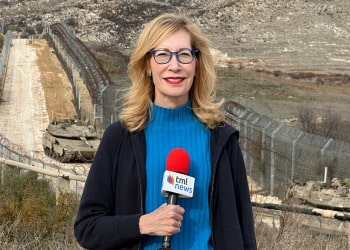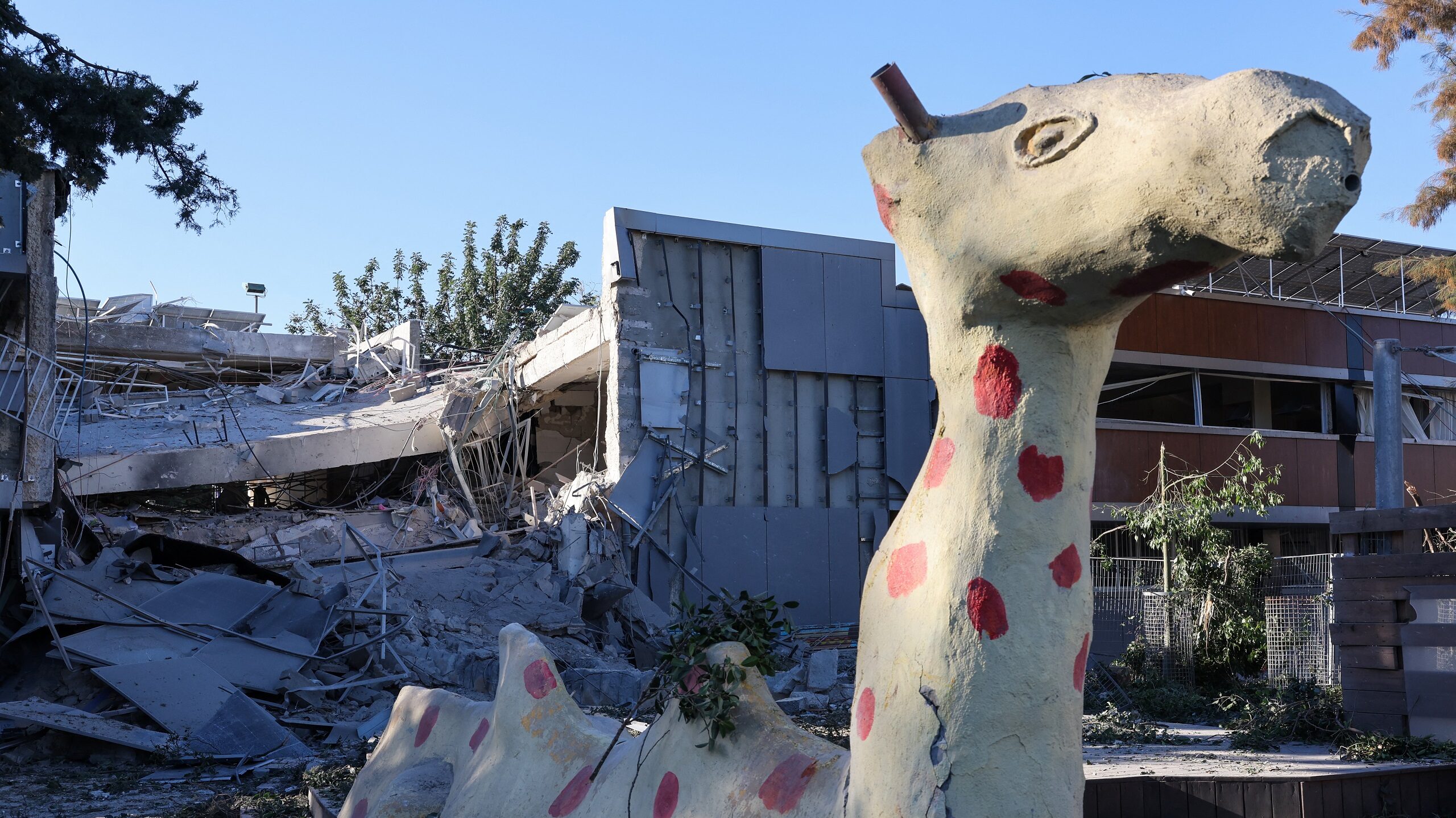What Sparked Israel’s Latest Airstrikes Deep Inside Yemen?
Israeli airstrikes target three Houthi-controlled ports, power stations, and facilities in Yemen's capital after a school near Tel Aviv is destroyed in the expanding regional conflict between Israel and Iranian-backed forces
Israeli jets bombed locations in Yemen controlled by the Iran-backed Houthi movement early on Thursday, shortly after a missile fired from Yemen was intercepted before entering Israel’s airspace. The airstrikes, which targeted facilities along Yemen’s Red Sea coast and its rebel-held capital, marked a dramatic escalation in a monthslong campaign of Houthi attacks against Israel amid the Gaza conflict, and came after falling debris from the intercepted missile caused significant damage in a Tel Aviv suburb.
The Israel Defense Forces (IDF) said the operation involved numerous fighter jets, refuelers, and surveillance aircraft, flying roughly 2,000 kilometers from Israel. According to military officials, they had planned this mission for weeks, anticipating another strike from the Houthis, who have repeatedly launched missiles and drones toward Israel since October 2023. Israeli authorities described the overnight attacks as focused on crippling three Houthi-controlled ports and infrastructure.
In Yemen, Houthi-aligned media outlets reported that the Israeli strikes killed at least nine people, targeting power stations and key facilities in the capital, Sana’a, as well as in Al Hudaydah and its nearby port areas. The Houthis claimed that the missile they fired earlier was one of two ballistic projectiles aimed at central Israel. Although the intercepted missile caused no direct casualties in Israel, debris destroyed a school building in Ramat Gan and triggered air raid sirens in central parts of the country, sending millions of Israelis rushing into shelters.
Yemen’s Conflict and Houthi-Iran Ties
Yemen’s protracted civil war began in 2014, after the Houthi movement, rooted in the country’s north, seized control of Sana’a and later toppled the internationally recognized government. In 2015, a Saudi-led coalition intervened in an attempt to restore the government. The conflict has since devolved into a regional power struggle, with Iran supporting the Houthis. Over the years, millions in Yemen have faced severe humanitarian hardships, with the United Nations labeling it one of the world’s worst humanitarian crises. Thousands of civilians have died from airstrikes, shelling, and the blockade-induced famine that followed.
Strategic shipping routes near Yemen, including Bab el Mandeb Strait, are critical for global trade. The Houthis have long been accused by Western and regional powers of using territory under their control to threaten international shipping. They have also tested and deployed increasingly sophisticated missiles and drones, many believed to be supplied or guided by Iranian expertise. The group’s alliance with Tehran mirrors other regional actors aligned with Iran, including Hezbollah in Lebanon and various paramilitary groups in Iraq and Syria.
Israeli Strikes and Their Targets
The overnight Israeli operation in Yemen targeted several key coastal facilities, including the ports of Al Hudaydah, Ras Isa, and Salif, as well as parts of Sana’a. According to the IDF, tugboats crucial for docking vessels were destroyed, and power stations were struck. This followed previous Israeli attacks on Yemen in recent months, often linked to Houthi missile or drone assaults that reached Israeli territory or shipping lanes in the Red Sea.
IDF spokesman Rear Adm. Daniel Hagari described the raids as “precise strikes,” adding that the Houthis had turned port and energy infrastructure into military assets. “Attacking these targets harms the terrorist authorities by preventing the exploitation of infrastructure for military and terror purposes, including transferring Iranian weaponry to the region,” an official IDF statement said. Israeli officials also claimed that these actions were necessary to protect both their citizens and global maritime commerce.
The Houthi Campaign Against Israel
This holiday season, give to:
Truth and understanding
The Media Line's intrepid correspondents are in Israel, Gaza, Lebanon, Syria and Pakistan providing first-person reporting.
They all said they cover it.
We see it.
We report with just one agenda: the truth.


Since Israel began its latest military campaign in Gaza following the Hamas-led assault on southern Israel in October 2023, various armed groups aligned with Iran have attacked Israeli interests in multiple arenas. The Houthis, identifying themselves as part of Iran’s “Axis of Resistance” alongside Hamas and Hezbollah, have repeatedly launched ballistic missiles and drones toward Israel. While some of these strikes have been intercepted or failed to reach their targets, others have inflicted damage and casualties. In July, a Houthi drone attack in Tel Aviv caused civilian deaths, prompting Israeli retaliation.
By the IDF’s account, Houthi fighters have fired over 200 missiles and 170 drones at Israel in the past year. Though most were intercepted or landed outside Israeli territory, a few caused structural damage and injuries, and at least one person was killed in an attack on Israel. In late 2023, the Houthis intensified their actions, frequently citing support for Palestinians in Gaza. The rebels claim that these strikes are meant to force Israel to halt its campaign against Hamas, though many of the vessels they have targeted carry no direct connection to Israel or its allies.
Growing International Concern
The United States and other nations have monitored the Houthi attacks with increasing apprehension. Washington has conducted its own strikes on Houthi targets associated with shipping threats in the Red Sea corridor. Earlier this week, US Central Command acknowledged hitting a command-and-control facility in Sana’a. The Houthis have similarly targeted or threatened vessels flagged by other countries, including those with no direct role in the Israel-Hamas conflict. Western navies have engaged in interceptions, and there is an ongoing multinational effort to secure shipping routes.
Additionally, the Houthis’ actions extend beyond missile fire. They have seized merchant ships, attacked oil infrastructure, and escalated the risk to regional stability. Diplomatic efforts involving various regional actors, including President Abdel Fattah el-Sisi of Egypt and others, have aimed to stabilize Yemen, end the civil war, and reduce the influence of Iran’s regional proxies. The Saudi-led coalition and Iran have previously engaged in indirect talks, raising prospects for a future cease-fire, yet little lasting progress has been achieved.
Israel’s Warnings and Strategic Calculations
Whoever lifts a hand will have it severed. Whoever strikes [us] will be struck many times over
In the wake of the recent attacks, Israeli officials cautioned the Houthis against continuing their campaign. Israel’s Defense Minister Israel Katz issued a stark threat: “Whoever lifts a hand will have it severed. Whoever strikes [us] will be struck many times over.” This message is part of a broader Israeli posture that includes warnings to Iran-backed groups throughout the Middle East.
Who is behind the Houthis? Iran.
IDF spokesman Hagari said in a video statement that the Houthis, through their assaults on maritime routes and attempts at long-range missile fire, “have become a global threat.” He attributed their growing capabilities to Iranian support. “Who is behind the Houthis? Iran,” he said. The Israeli military insisted it “will act against anyone in the Middle East” who threatens its security. Officials also signaled that the United States had been notified before the latest operation, suggesting some level of coordination with Washington even if US forces did not directly participate.
Immediate Aftermath and Future Implications
Thursday’s missile launch from Yemen prompted the IDF Home Front Command to send residents across a wide swath of central Israel into their bomb shelters, as the long-range Arrow air defense system intercepted a rocket heading toward the Tel Aviv area. While no injuries were reported, a school building in Ramat Gan collapsed due to falling debris from the intercepted rocket.
The Houthis, for their part, promised a “significant military statement” in the hours after the strikes, following their established pattern of announcing responsibility and claims about the impact of their operations. Their satellite channel, al-Masirah, aired footage purportedly showing fires and destruction in Yemen. The Houthis stated that those killed and wounded were civilians, although this claim has not been independently verified.
The Israeli attacks in Yemen arrive at a moment when the region is already on edge. Israel’s extensive military activity in Gaza, where it is trying to eliminate Hamas’ infrastructure, has caused thousands of casualties and widespread destruction. Across the region, Iranian-backed groups have responded with various provocations. Lebanon’s Hezbollah has fired rockets into northern Israel and threatened more action, while pro-Iranian groups in Syria and Iraq have been accused of orchestrating strikes on US forces and allied interests.
Israel has significant strategic reach and can project power deep into Yemen without apparently encountering effective anti-aircraft resistance from the Houthis. The Houthis have battled a Saudi-led coalition to a stalemate inside Yemen, and while their missiles and drones have occasionally penetrated Saudi and Emirati defenses, Israeli airstrikes suggest a capability gap on the Houthis’ side when facing a well-prepared opponent with advanced intelligence and airpower.
For regional powers, the intensified confrontation between Israel and the Houthis puts at risk not only human lives but also the stability of key maritime routes. Attacks along the Red Sea corridor affect shipping insurance rates, global trade, and fuel prices. Yemen’s ports, especially Al Hudaydah, play a crucial role in delivering food, fuel, and humanitarian supplies to millions of Yemenis, already facing dire shortages.
Diplomatic avenues might become more complicated as these escalations continue. While the Houthis claim solidarity with Palestinians and demand an end to Israeli operations in Gaza, their actions draw them deeper into a conflict that could invite more international scrutiny and tougher retaliation. Analysts have noted that Iran’s support enables the Houthis to expand their military toolkit, but it may also pull Yemen further into regional rivalries.
For Israel, the strikes serve as a message that it is willing to engage enemies far beyond its immediate neighbors if attacks persist. By targeting infrastructure used by the Houthis to facilitate their maritime campaigns, Israel aims to deter further strikes. Yet whether this will reduce Houthi attacks or provoke a cycle of escalation remains uncertain.
In the broader Middle Eastern context, the involvement of various Iranian-backed groups in confrontations with Israel reflects Tehran’s strategy of exerting pressure on multiple fronts. While Iran denies direct responsibility, the pattern of proxy activity suggests coordination. The Houthis’ role, once primarily confined to the Yemeni battleground, now plays out in a theater that includes Israeli cities, Gulf shipping lanes, and Western military interests. This expansion of their operational sphere complicates the region’s already tangled web of alliances and conflicts.

